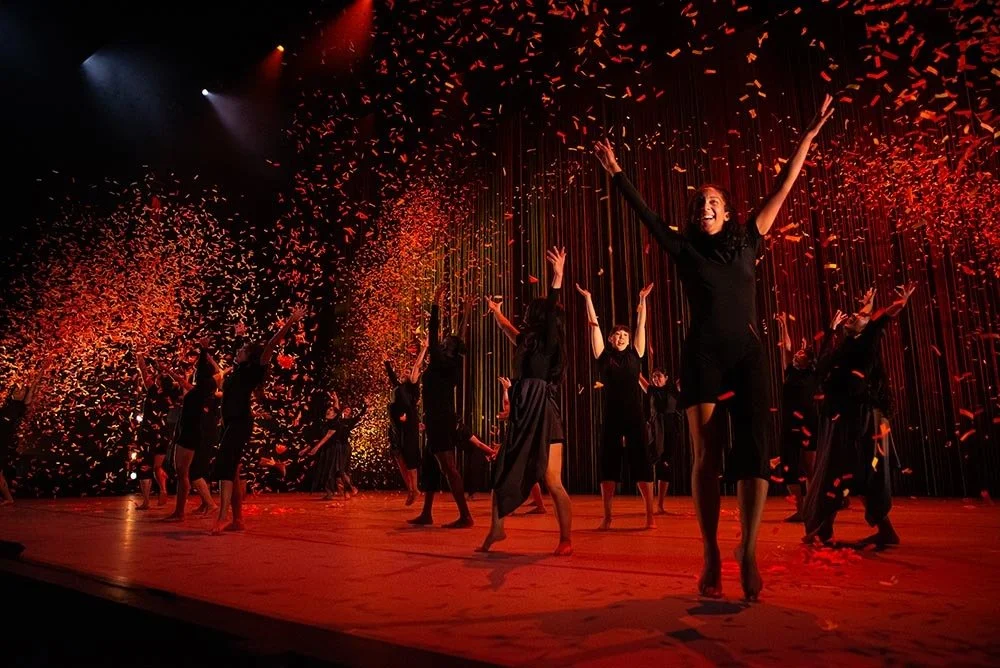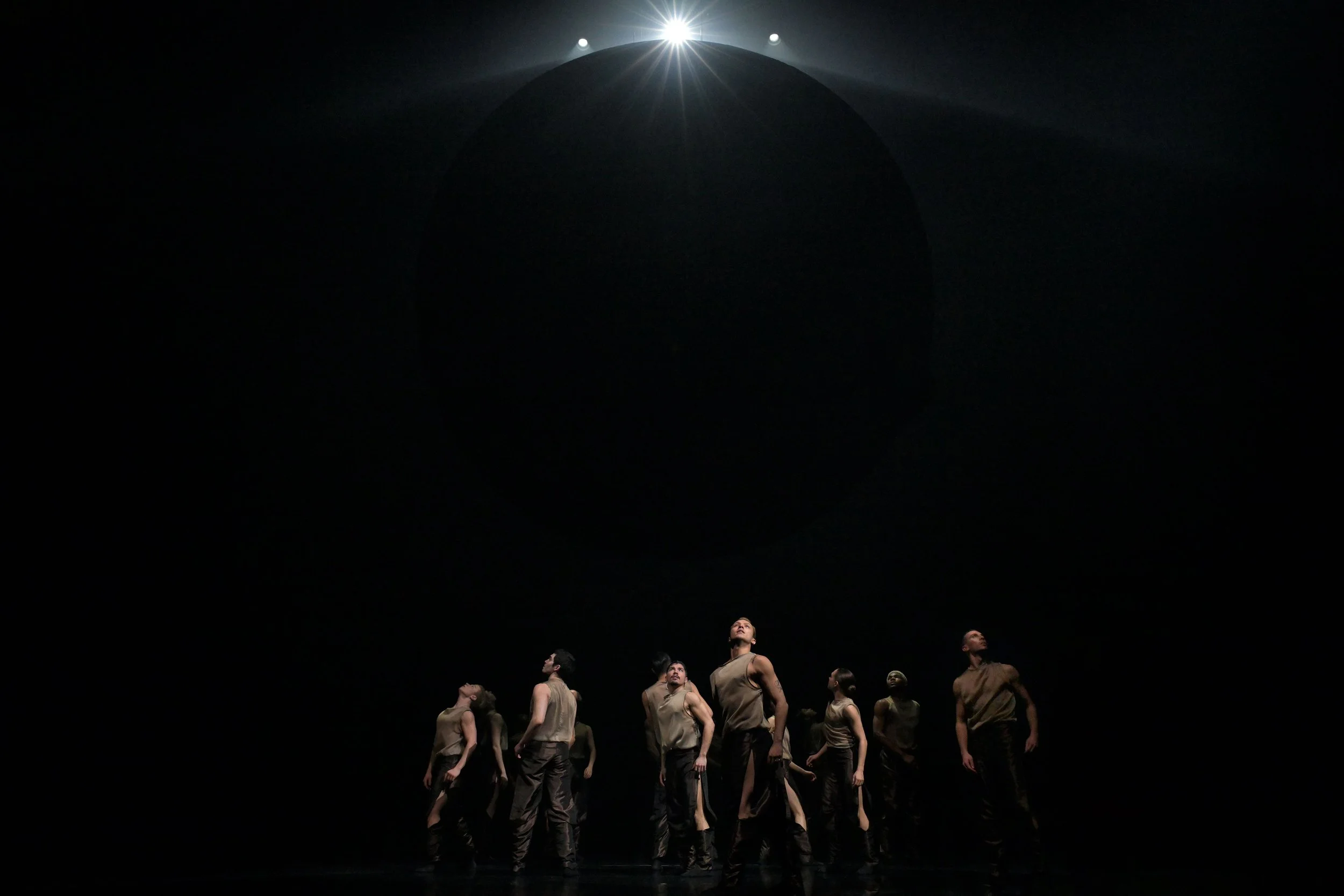Nova Bhattacharya's Svāhā! reinvents ritual and celebrates female energy on a grand scale
The Toronto-based dance artist draws on her own memories of immigrant women forming community for the 22-performer work
Svāhā! Photo by Francesca Chudnoff
Indian Summer Festival, DanceHouse, and SFU Woodward’s Cultural Programs present Svāhā! at the Vancouver Playhouse on July 14 and 15
TECHNICALLY, GENRE-CROSSING Toronto dance artist Nova Bhattacharya has been conceiving her epic dance piece Svāhā! since 2016. But to find the true seed of the work, you have to go back to her childhood, and the women who surrounded her.
“As a Bengali Canadian growing up in Toronto in the ‘70s, I was constantly observing community being built—whether that was my mother and her friends, or because I started dancing when I was seven years old,” she tells Stir on a break from rehearsal before the 22-woman show is presented here by Indian Summer Festival, DanceHouse, and SFU Woodward’s this week. “So I was always seeing—whether it was through food or through getting dressed or through holding the memories of their homeland—how women were creating community here and creating new connections and a new sense of home. My childhood, and watching immigrant women, was very much an inspirational point.”
Named for a Sanskrit oblation, Svāhā! has ended up celebrating female energy and reinventing ritual.
It also explores the transformative power of dance to bring people together—literally, as it gathers 22 dance artists from backgrounds as far-flung as Bharatanatyam, Butoh, classical ballet, hip-hop, tap, and contemporary dance. As the troupe builds elaborately carved rhythms, movement patterns, and chants, they’re accompanied by the live music of tabla virtuoso Ed Hanley and DJ Gurtej Hunjan.
The boundaries between dance forms have long blurred for Bhattacharya, whose own background as a performer has spanned Indian classical dance, Butoh, and contemporary dance. In fact, the artist founded Nova Dance in 2008 as a company where artists working across diverse backgrounds and styles could converge (and also because she could not find a place for her work in multicultural Toronto). But she had never worked on a piece of such scale.
Nova Bhattacharya
“I've always craved the depth and texture you can get with movement when you have a larger cast,” she says. “What was really exciting about the final cast coming together was that I was in residency at the National Ballet studios in Toronto, and to be making a work of scale in a studio that was designed for work of scale was really so inspiring. And it just gave me the canvas to do it.”
Tracing the work back further, she adds: “Back in 2016, I was working on a process and I said to some dancers, ‘I'm really feeling like we need to put some joy into the world,’ which was ironic.” That was because, at the time, she was in the middle of creating Infinite Storms, a critically lauded piece that explored her lifelong experience of chronic migraines. “So it was like I had to do the pain piece before I could get to the joy,” Battacharya says with a laugh. But it was also prescient: Svāhā!’s creative process and premiere would go on to be delayed by the pandemic—one that made putting that “joy into the world” even more important.
It’s surprising to hear that trying to tap authentic exuberance in a dance work was out of Bhattacharya’s comfort zone at the time. “I kept saying, ‘Well, saying ‘joy’ is terrifying me, so it must be the right decision!” she says with a laugh. “My concern was, How am I going to get the dancers to a place of joy that's natural and organic, and not forced and contrived?”
The fact she achieved that goal reinforced her longtime creative process: to make time for people to get to know each other—“just to build the room”, as she puts it.
“And then I had two things that were very definitely on my side,” she adds. “One was that dance itself is this exciting, challenging place to be, and those of us who have chosen it as our profession do feel joy when we learn a new step, when we master a new way of moving. And then the other thing I had going for me was that we were coming out of a pandemic. Here we were on March 21, still having to do swabs up our noses and file our vaccine certificates with the theatre where we were rehearsing—it was very much still pandemic conditions in Toronto. But here we actually were gathering together to dance, and so dancers wanted to dance and they wanted to be given steps and they wanted to be learning.”
As audience members will see when the work debuts here at the Vancouver Playhouse this week, the piece expands beyond just the 22 intricately choreographed dancers onstage. Bhattacharya put out a call for her Body Choir project—an invitation for 15 Vancouver performers to create an “opening incantation” before the main show. Based on a rhythmic cycle of repetitions, it’s something Bhattacharya has eagerly watched via video from afar as it’s been created. And the Body Choir is exactly the kind of community building that she saw immigrant women doing back when she was a child—and that inspired Svāhā!.
“It’s the embodiment of this message that dancing together is how humans can be together," she stresses. "Dancing together is how we can feel reconnected to our own selves and work through the stresses and traumas of the last three years that everybody's been living with. Dance is the ultimate ritualistic gathering.”















